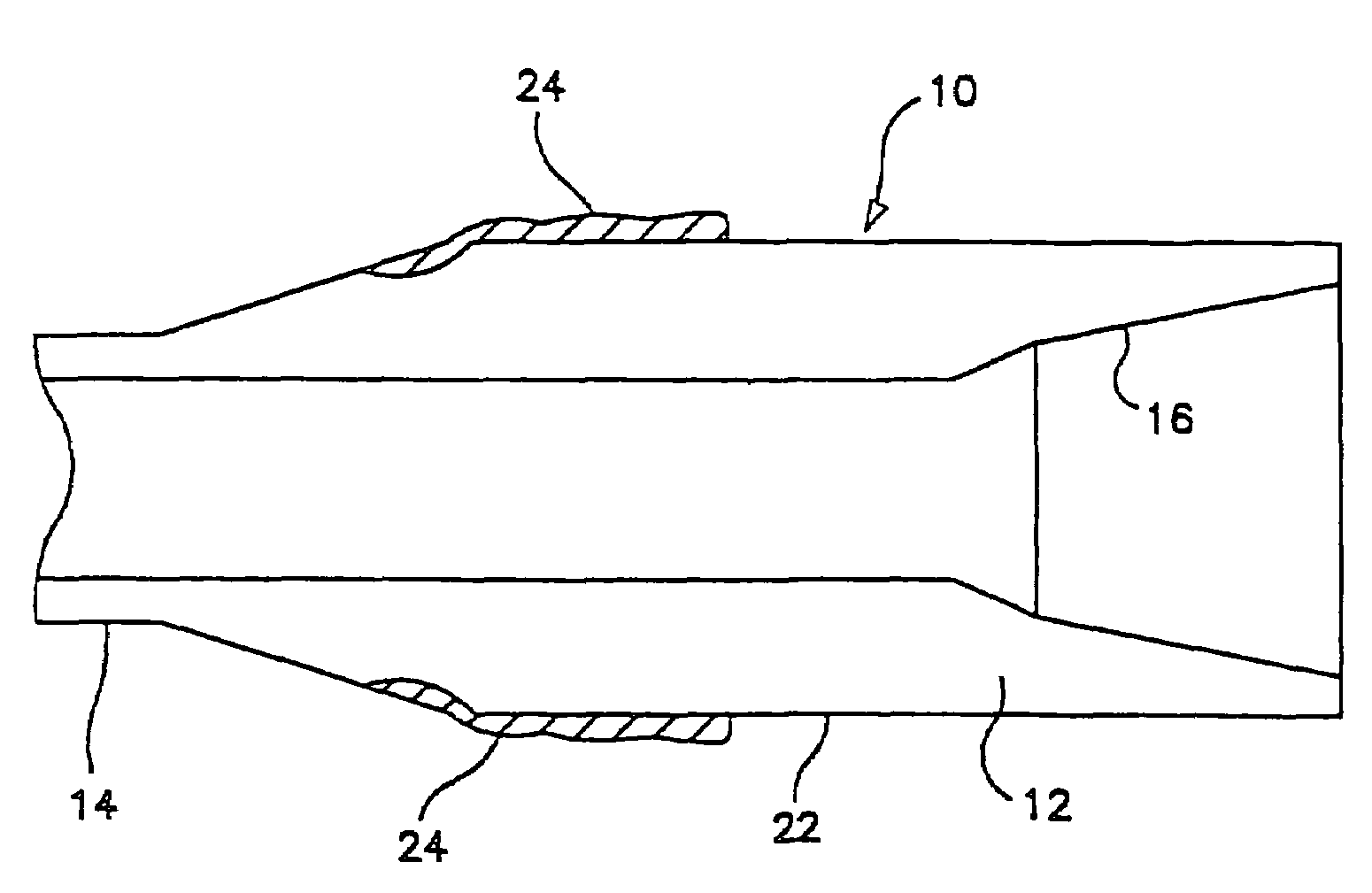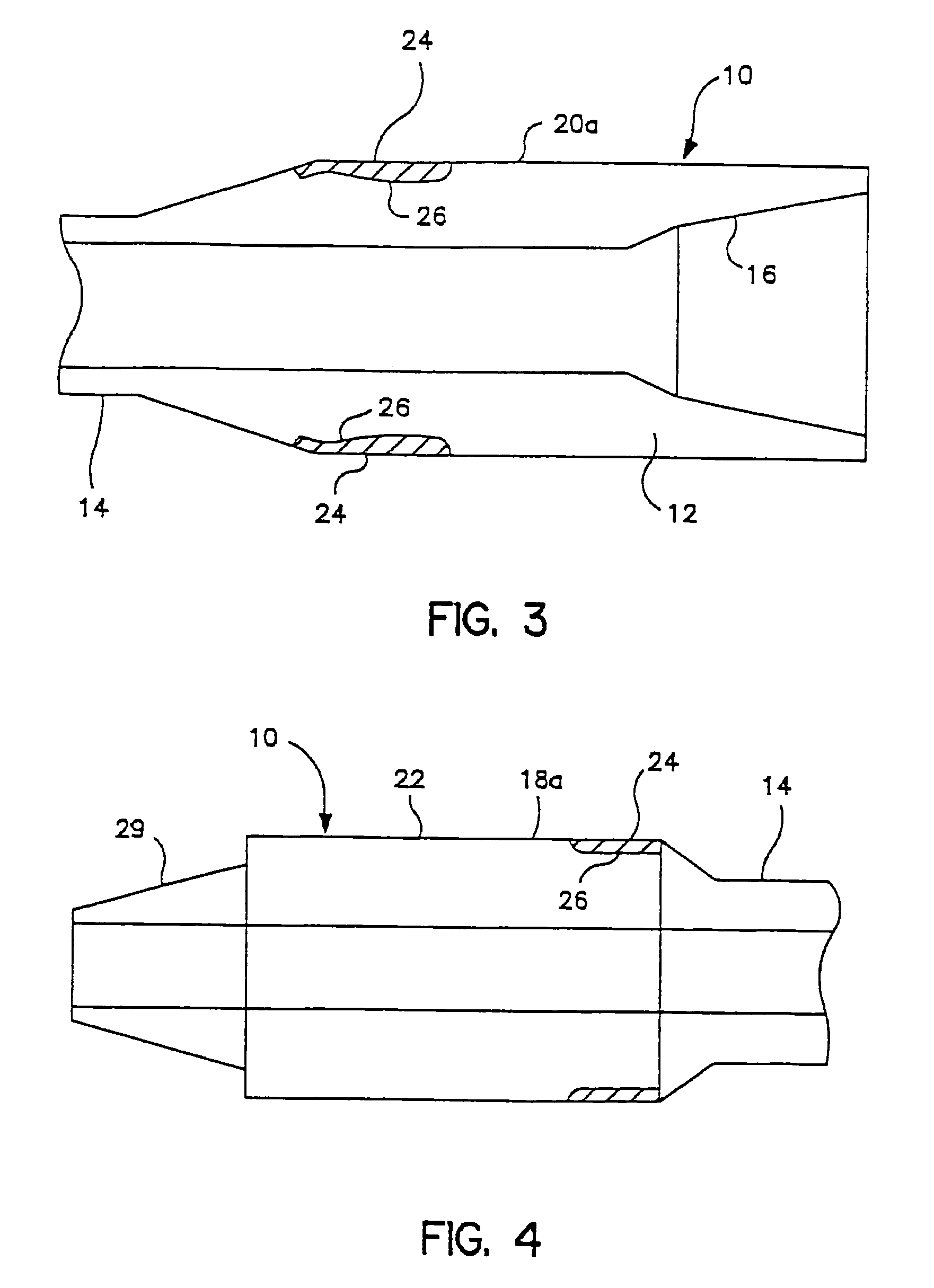Hardfacing alloy, methods and products
a technology of hardfacing alloy and hard coating, applied in the direction of drilling casings, pipe protection against corrosion/incrustation, drilling pipes, etc., can solve the problems of high cost of tungsten carbide, affecting the performance of hard coating, so as to minimize the induced casing wear, maximize the resistance of the tool joint, and protect the effect of abrasion
- Summary
- Abstract
- Description
- Claims
- Application Information
AI Technical Summary
Benefits of technology
Problems solved by technology
Method used
Image
Examples
Embodiment Construction
[0049]The hardfacing composition of the present invention comprises by weight from about 0.45 to about 0.8 percent Carbon, about 3.5 to about 4.5 percent Boron, about 0.8 to about 1.25 percent Manganese, about 4.5 to about 6.5 percent Niobium, about 0.6 to about 0.8 percent Silicon, about 2.0 to about 2.5 percent Nickel, and the balance Iron with impurities as trace elements.
[0050]The hardfacing alloy composition of the present invention has an all weld hardness of from about 63 Rc (772 Hv) to 66 Rc (865 Hv), an average hardness single layer on industrial products, such as tool joints and drill stabilizers of about 595 Hv, a quadratic crystallographic boride and eutectic structure, a balance of metal to metal and abrasion resistance, and is capable of being deposited in single and double layers on top of itself or on pre-existent hardband alloys, such as tungsten carbide deposits.
[0051]The hardfacing alloy composition is preferably deposited by metal cored tubular wire containing th...
PUM
| Property | Measurement | Unit |
|---|---|---|
| hardness | aaaaa | aaaaa |
| hardness | aaaaa | aaaaa |
| hardness | aaaaa | aaaaa |
Abstract
Description
Claims
Application Information
 Login to View More
Login to View More - R&D
- Intellectual Property
- Life Sciences
- Materials
- Tech Scout
- Unparalleled Data Quality
- Higher Quality Content
- 60% Fewer Hallucinations
Browse by: Latest US Patents, China's latest patents, Technical Efficacy Thesaurus, Application Domain, Technology Topic, Popular Technical Reports.
© 2025 PatSnap. All rights reserved.Legal|Privacy policy|Modern Slavery Act Transparency Statement|Sitemap|About US| Contact US: help@patsnap.com



